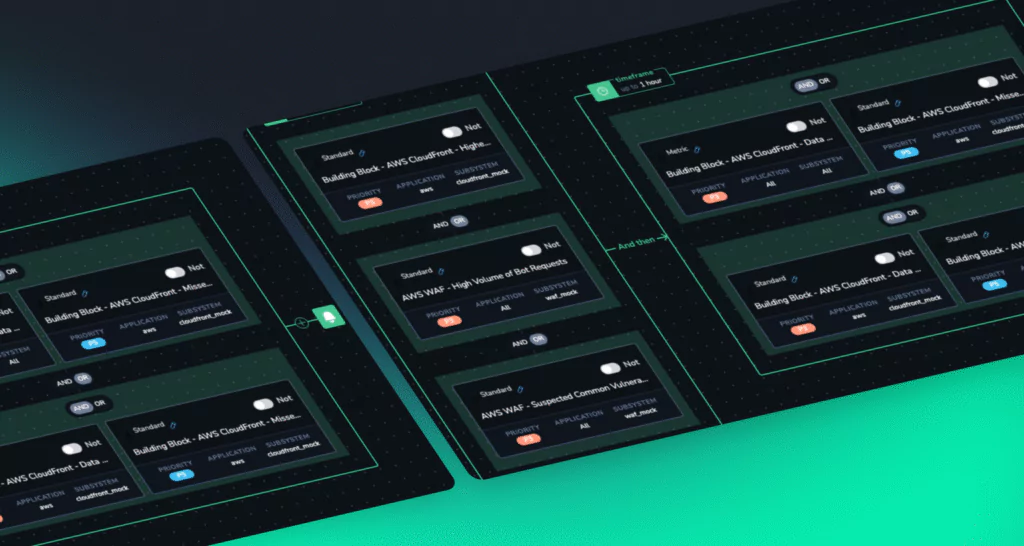4 Observability Metrics Examples to Overcome Big Challenges

Having a strong full-stack observability has become increasingly crucial in modern IT environments, as organizations strive to gain deep insights into their systems’ behavior, performance and overall health. However, achieving effective observability can be challenging without the right tools and strategies in place.
In this article, we will explore the key challenges associated with observability and how Coralogix can help overcome those issues. We will also investigate various observability metrics examples that can be used to create a robust strategy. Read more to learn about our expert insights toward enhancing observability practices.
Observability metrics challenges:
The endeavor to embark on an observability journey comes with its fair share of challenges. Let’s explore the common obstacles faced by organizations and look at how Coralogix can help overcome these hurdles while harnessing the power of observability metrics.
- Data volume and complexity
Data generation has reached unprecedented levels, posing a significant challenge for organizations. Processing and analyzing massive volumes of data efficiently becomes crucial for effective observability.
Coralogix offers advanced data management capabilities that can seamlessly handle large data volumes. By efficient processing and extracting meaningful insights, Coralogix empowers organizations to make informed decisions based on observability metrics.
- Distributed environments
The shift toward microservices and containerization has introduced highly distributed environments. This makes tracing and monitoring increasingly complex to interconnect.
Coralogix provides a centralized observability solution, enabling organizations to gain holistic visibility into distributed systems. With the platform, tracking and troubleshooting across various components becomes streamlined, leading to improved system reliability and performance.
- Noise and alert fatigue
Alert fatigue can cripple even the most diligent teams. Inundated with irrelevant alerts, IT and DevOps teams struggle to identify critical issues promptly. Coralogix combats noise and alert fatigue through intelligent algorithms and machine learning.
By leveraging these capabilities, Coralogix filters and prioritizes alerts, ensuring that only actionable incidents are presented to the teams. This focused approach empowers organizations to respond swiftly to critical issues, enhancing overall system observability.
Leveraging the platform for effective full-stack observability guide experience, Coralogix offers a comprehensive observability platform that addresses the challenges mentioned above, empowering organizations to achieve improved visibility and control.
- Siloed monitoring tools
Siloed monitoring tools and data can hinder collaboration and coordination across teams. Different teams may use their own monitoring tools, resulting in isolated data and a fragmented view of the system.
Coralogix responds to this problem by consolidating data from various sources and integrating with a wide range of monitoring tools and systems. The observability platform allows organizations to aggregate and analyze data from different sources in a unified view.
The platform also breaks down data silos, enabling cross-team collaboration and providing a holistic understanding of system performance and behavior. With its centralized approach, Coralogix eliminates the need for switching between multiple tools, enabling teams to work together effectively for better observability across the organization.
- Scalability and performance monitoring
As systems scale, monitoring performance and scalability becomes crucial. It is important to identify bottlenecks, hotspots, or resource constraints that impact system performance and scale resources accordingly.
Coralogix addresses scalability and performance challenges by providing a cloud-native observability platform that is designed to handle large-scale data ingestion and processing. The platform leverages advanced indexing and storage techniques to optimize data storage and retrieval, enabling efficient querying and analysis of log data.
Coralogix also offers real-time analytics and machine learning capabilities to detect anomalies and performance issues, allowing organizations to proactively identify and resolve scalability-related issues. By providing a scalable and performant solution, Coralogix empowers organizations to achieve reliable observability at any scale.
Observability metrics examples
Now that we’ve gone over the observability challenges, let’s dive into some observability metrics examples that can be leveraged by any team of IT and DevOps engineers to make observability collaborative.
- Error rates and response times
Monitoring error rates and response times provide insights into the performance and reliability of applications and services. An increase in error rates or prolonged response times may indicate potential issues that require immediate attention.
- CPU and memory utilization
Tracking CPU and memory utilization helps identify resource bottlenecks and optimize system performance. Unusually high utilization levels may indicate the need for infrastructure scaling or code optimization.
- Network traffic and latency
Monitoring network traffic and latency helps assess the health and efficiency of network connections. Spikes in traffic or prolonged latency can indicate network congestion or potential performance degradation.
- Security-related metrics
Metrics such as failed login attempts, unauthorized access, or unusual user behavior offer insights into potential security threats. Tracking these metrics enables organizations to detect and respond to security incidents promptly. In conclusion, observability metrics play a pivotal role in enhancing system visibility and performance.
By addressing the challenges associated with observability, organizations can unlock the full potential of observability metrics. With Coralogix, IT professionals, DevOps teams, and engineers can confidently navigate the complex landscape of modern systems, ensuring optimal performance, reliability, and security.
Key features and benefits of Coralogix
- Log analytics: Coralogix’s log analytics capabilities enable organizations to collect, analyze, and visualize log data from diverse sources in real time. With powerful search and query functionalities, teams can swiftly identify patterns, anomalies, and potential security threats. This granular level of log analysis allows for proactive issue identification and swift resolution.
- Machine Learning-powered insight: Coralogix employs advanced machine learning algorithms to automatically detect meaningful patterns and anomalies within log data. By leveraging machine learning, you can enable proactive identification and resolution of issues before they impact system performance or security. These insights provide organizations with the ability to stay one step ahead in maintaining optimal system health.
- Contextual monitoring: Coralogix integrates with various data sources, including logs, metrics, traces, and events, enabling contextual monitoring. This comprehensive view of system behavior provides organizations with deep insights into performance, security, and overall health. To create an effective observability strategy, organizations must define relevant metrics aligned with their specific goals and requirements.




